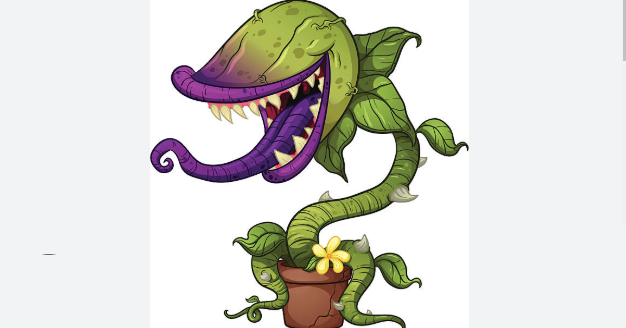rewrite this content and keep HTML tags
Carnivorous plants are interesting members of the plant world that have evolved to trap and digest animals, mostly insects, to survive.
These plants thrive in places where the soil is poor in nutrients, making them rely on a unique menu to stay alive. What’s even more interesting is how these plants catch their prey using clever traps, sticky surfaces, or even fast movements.
Here, we’ll introduce you to five of the most amazing carnivorous plants and explain how they trap and consume their prey. Get ready to be amazed!
1. Venus flytrap
The Venus flytrap is the most famous carnivorous plant. Its “jaws” are made of two hinged leaves with tiny hair-like sensors. When an unsuspecting insect lands on the leaves and touches the sensors, the jaws snap shut in less than a second. Once the prey is trapped, the plant releases digestive juices to break it down and absorb the nutrients. It’s like a nature-made mousetrap, but for bugs.
2. Pitcher plant
The pitcher plant is like a beautiful but deadly vase. Its leaves form deep, tube-shaped “pitchers” filled with a sweet-smelling liquid. This liquid lures insects, frogs, and even small mammals into the pitcher. Once inside, slippery walls and downward-pointing hairs prevent escape, causing the prey to drown in the liquid. The plant then digests its meal slowly over time.
3. Sundew
Sundews are covered with sticky, glistening tentacles that look like dewdrops. These tentacles attract insects with their sugary shine. Once an insect lands on the plant, it becomes trapped in the sticky substance. The tentacles then slowly wrap around the prey, smothering it. Sundews digest their food using enzymes and absorb the nutrients to grow in nutrient-poor soil.
4. Bladderwort
Bladderworts are aquatic carnivorous plants that use suction to trap their prey. They have tiny, bladder-like sacs under water with a trapdoor mechanism. When small creatures like water fleas swim by, the trapdoor opens in an instant, sucking the prey inside. It’s one of the fastest movements in the plant kingdom, making bladderworts fierce hunters in their watery world.
5. Butterwort
Butterworts might look harmless, with their flat, green leaves, but they are deadly to small insects. Their leaves are coated with a sticky substance that traps any insect that lands on them. Once caught, the plant produces digestive enzymes to break down the prey and absorb its nutrients. Butterworts are often used to control pests like gnats in greenhouses.
ALSO READ: 5 fascinating trees that have gone extinct
.Organize the content with appropriate headings and subheadings (h1, h2, h3, h4, h5, h6), Retain any existing tags from

Carnivorous plants are interesting members of the plant world that have evolved to trap and digest animals, mostly insects, to survive.
These plants thrive in places where the soil is poor in nutrients, making them rely on a unique menu to stay alive. What’s even more interesting is how these plants catch their prey using clever traps, sticky surfaces, or even fast movements.
Here, we’ll introduce you to five of the most amazing carnivorous plants and explain how they trap and consume their prey. Get ready to be amazed!
1. Venus flytrap
The Venus flytrap is the most famous carnivorous plant. Its “jaws” are made of two hinged leaves with tiny hair-like sensors. When an unsuspecting insect lands on the leaves and touches the sensors, the jaws snap shut in less than a second. Once the prey is trapped, the plant releases digestive juices to break it down and absorb the nutrients. It’s like a nature-made mousetrap, but for bugs.
2. Pitcher plant
The pitcher plant is like a beautiful but deadly vase. Its leaves form deep, tube-shaped “pitchers” filled with a sweet-smelling liquid. This liquid lures insects, frogs, and even small mammals into the pitcher. Once inside, slippery walls and downward-pointing hairs prevent escape, causing the prey to drown in the liquid. The plant then digests its meal slowly over time.
3. Sundew
Sundews are covered with sticky, glistening tentacles that look like dewdrops. These tentacles attract insects with their sugary shine. Once an insect lands on the plant, it becomes trapped in the sticky substance. The tentacles then slowly wrap around the prey, smothering it. Sundews digest their food using enzymes and absorb the nutrients to grow in nutrient-poor soil.
4. Bladderwort
Bladderworts are aquatic carnivorous plants that use suction to trap their prey. They have tiny, bladder-like sacs under water with a trapdoor mechanism. When small creatures like water fleas swim by, the trapdoor opens in an instant, sucking the prey inside. It’s one of the fastest movements in the plant kingdom, making bladderworts fierce hunters in their watery world.
5. Butterwort
Butterworts might look harmless, with their flat, green leaves, but they are deadly to small insects. Their leaves are coated with a sticky substance that traps any insect that lands on them. Once caught, the plant produces digestive enzymes to break down the prey and absorb its nutrients. Butterworts are often used to control pests like gnats in greenhouses.
ALSO READ: 5 fascinating trees that have gone extinct
and integrate them seamlessly into the new content without adding new tags. Include conclusion section and FAQs section at the end. do not include the title. it must return only article i dont want any extra information or introductory text with article e.g: ” Here is rewritten article:” or “Here is the rewritten content:”
